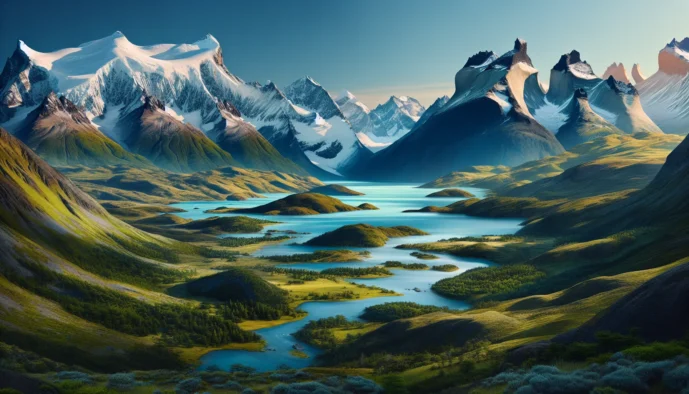Overview of Patagonia’s geography
Explore the stunning geography of Argentinian Patagonia, from the windswept plains of Tierra del Fuego to the rugged Magallanes region.

Welcome to an exploration of the stunning and diverse landscapes of Patagonia, focusing on the regions of Argentinian Patagonia, Tierra del Fuego, and the Magallanes region. This article provides a comprehensive overview of the **geographical features** that define these southernmost parts of South America. Travelers, geographers, and nature enthusiasts will discover insights into the unique climates, topographical wonders, and environmental importance of these spectacular regions. Whether you’re planning an adventure or simply looking to expand your knowledge, this guide will equip you with a thorough understanding of Patagonia’s **geographic diversity and significance**.
Essentials
A Region, Not a Country
Patagonia is a geographical region at the southern end of South America, not a single country. It is shared by two nations, with the Andes Mountains forming the natural border and backbone of the entire region.
- Argentina occupies the eastern side of the region.
- Chile occupies the western side.
The Major Geographic Zones
The Andes: The Mountainous Spine
This is the most famous part of Patagonia, home to iconic, jagged peaks that attract trekkers and photographers from around the globe. This is where most of the world-class trekking and climbing is concentrated.
Key areas for travelers:
- Los Glaciares National Park, Argentina (Mt. Fitz Roy, Cerro Torre).
- Torres del Paine National Park, Chile (The “Towers” and “Horns”).
Glaciers & The Southern Patagonian Ice Field
Patagonia is home to the third-largest ice cap in the world, after Antarctica and Greenland. This massive ice field feeds hundreds of glaciers, some of which are remarkably accessible.
Famous, accessible glaciers on your trip may include:
- Perito Moreno Glacier (Argentina): Famous for its dramatic ice calving, where huge chunks of ice break off and crash into the lake.
- Grey Glacier (Chile): A key feature seen from treks in Torres del Paine.
Glacier viewing is a cornerstone of the Patagonian experience. Depending on your itinerary, this can be done from viewing platforms, up close from a boat or kayak, or even by trekking directly on the ice with a specialized guide.
The Patagonian Steppe (Argentinian Side)
East of the Andes, the landscape transforms into a vast, semi-arid plateau. This section of your journey helps set expectations for the immense, and often seemingly empty, landscapes you will see between major destinations.
Characteristics:
- Expansive, flat, or rolling plains with low-lying shrubs.
- Known for being extremely windy.
You will experience this landscape during any long-distance road travel in Argentina, for example, along the famous Ruta 40.
Fjords, Islands & Channels (Chilean Side)
West of the Andes, the coastline is a dramatic maze of fjords, channels, and thousands of islands. The mountains drop steeply into the Pacific Ocean, creating a landscape similar to Norway or New Zealand. This region is much wetter and more verdant than the Argentinian steppe. Travel in this zone is often done by ferries and expedition cruises.
How This Geography Impacts Your Travels
The Andes as a Weather Barrier
The mountains create a powerful “rain shadow” effect, which dictates the climate and landscape on either side.
- Chilean Patagonia (West): Catches Pacific moisture, resulting in high rainfall, temperate rainforests, and lush vegetation.
- Argentinian Patagonia (East): Is shielded from the rain, resulting in a dry, windy, and desert-like climate.
Be prepared for a dramatic and rapid change in both scenery and weather whenever your itinerary involves crossing the Andes.
Understanding Scale and Distance
Patagonia is immense—over 1 million square kilometers (400,000 sq miles). Travel between key hubs like El Calafate, El Chaltén, and Ushuaia involves significant distances. Be prepared for long travel days by bus or car; flights are often required to cover the largest distances efficiently.
Microclimates and Unpredictable Weather
The combination of high mountains, massive ice fields, and proximity to two oceans creates highly localized and rapidly changing weather. The famous saying “you can experience four seasons in one day” is true here. A sunny morning can turn into a windy, snowy afternoon in a matter of hours, especially in the mountains.
This geographical reality is precisely why packing versatile layers of clothing is not just a suggestion, but an essential strategy for comfort and safety during your travels.